NASA marks first occasion that Wi-Fi connects vehicles in space
The Japanese HTV-9 cargo transfer vehicle demonstrated a high-definition live video streaming application using Wi-Fi® during its final approach to the International Space Station (or space station) on May 25, 2020. The HTV-9 used a Wi-Fi client to stream to a temporary access point on the end of the Japanese robotic arm on the space station at a distance of 600 meters. This marks the first occasion that Wi-Fi has connected vehicles in space. The HTV-9 client also streamed video through one of five general-use access points on the space station that was simultaneously carrying traffic for an Earth-sensing spectrometer, marking the first occasion that Wi-Fi has been selected by international partners as an interface between independently delivered vehicle infrastructures in space. The passive “safed” HTV-9 vehicle was delicately captured by astronauts Chris Cassidy and Ivan Vagner who guided a second, larger Canadian robot arm. The vehicle was then berthed by ground controllers. The activity was a precursor to an autonomous docking demonstration, when the Japanese HTV-X2 vehicle will be active but the crew can command it to abort if there appears to be any malfunction. The capture was commended from Houston by astronaut Norishige Kanai of Japan, as well as the HTV-9 ground control team in Tsukuba, Japan.
Video: Summary of the Wireless LAN Demonstration performed by HTV-9. Source: JAXA
Operated by the Japanese Space Agency, JAXA, the Japanese H-II Transfer Vehicle (HTV) is named “Kounotori” (‘white stork’). HTV-9 is the last transfer vehicle using the H-IIB rocket, as JAXA transitions to the HTV-X transfer vehicles using the H-3 rocket. The transfer vehicle is a pressurized cargo freighter spacecraft that delivers supplies to the International Space Station. At the space station, the vehicle is captured by the Canadarm and then berthed. HTV-9 has delivered the final set of Japanese lithium-ion batteries to upgrade the space station’s night-time supply of electrical power. HTV-9 also delivered fresh food and experiments. HTV-9 launched from Tanegashima Space Center on May 21, and will depart the space station in summer of 2020.
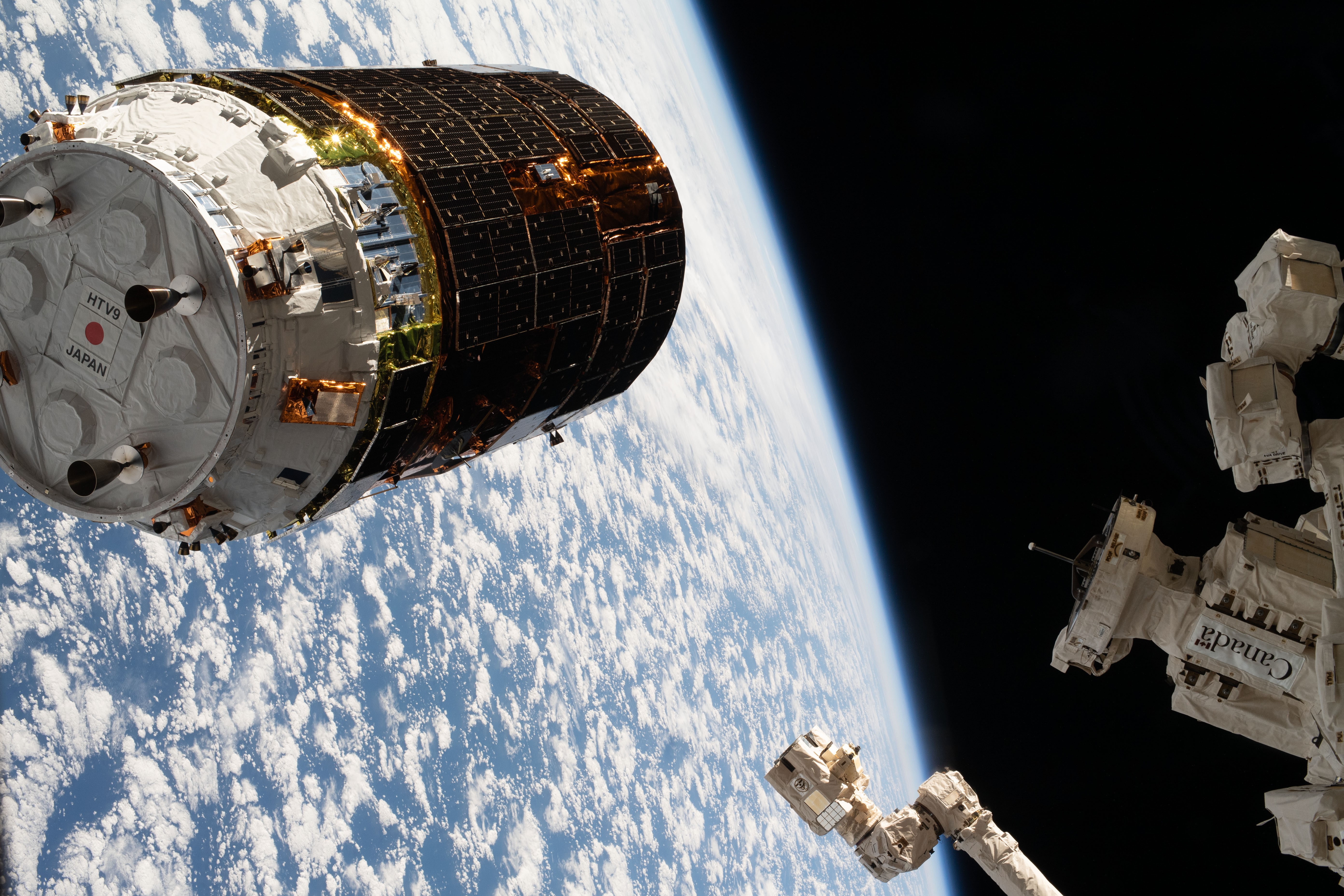
Photo: HTV-9 approaches the International Space Station. Coincidentally, this image was transmitted using Wi-Fi, but that’s different story. Source: NASA
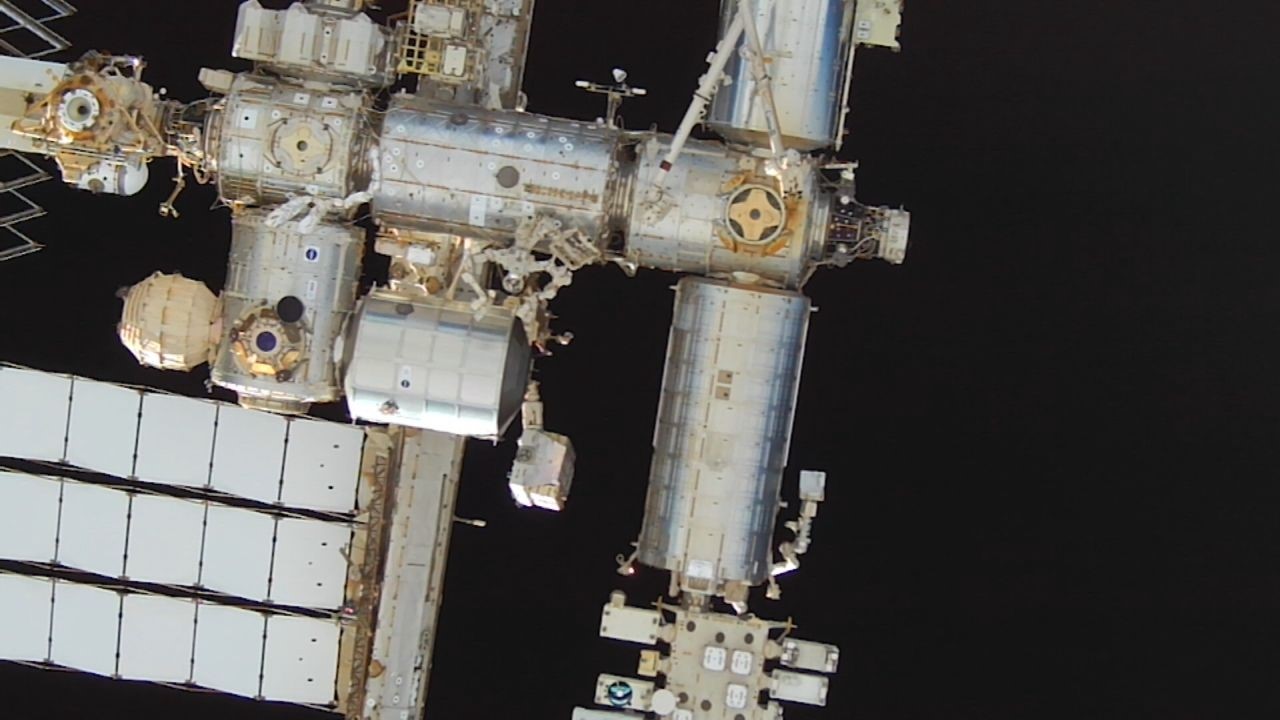
Photo: The undercarriage of the International Space Station as viewed from HTV-9. Modules at the right side of the image, the bow of the space station, are top (starboard) to bottom (port) the European “Columbus,” United States “Harmony,” and the Japanese “Kibo” with its associated robotically curated porch (Exposed Facility). The Wireless LAN Demonstration AP on the JAXA robotic arm is visible forward of the Kibo. The berthing port and Canadarm are visible on the nadir side of the Harmony module. This image was transmitted from HTV-9 using Wi-Fi. Source: JAXA
The video streaming objective was referred to as Wireless LAN Demonstration, or WLD. During the demonstration, video from a camera on the HTV-9 was streamed to a laptop computer on the space station to provide situational awareness for the crew. The video was simultaneously streamed to the Tsukuba Space Center in Japan. Both streams originated at the HTV-9, doubling the uplink load on the connection to the Wi-Fi network.
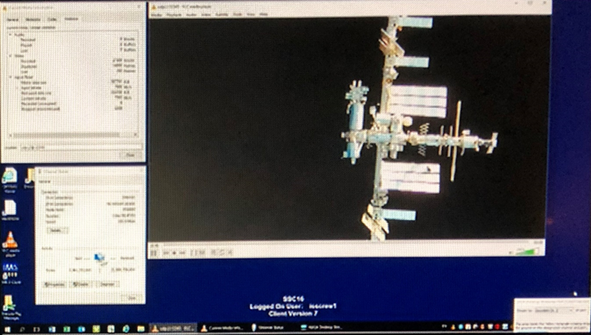
Photo: The space station crew was able to watch the HTV-9 video using a laptop. The JAXA AP is on the left side of the image. Source: NASA and JAXA
JAXA repackaged a commercial access point built for sale in Japan, while the general-use access points were built for sale in the United States of America. JAXA and NASA made independent procurements and did not exchange any flight or flight-like hardware. During the demonstration, the Japanese client configured for sale in the USA, connected to both Japanese and USA infrastructures. Before operating in space, Japanese teams made two trips to Johnson Space Center in Houston for interface compatibility tests and integration data flows from a space station testbed on the ground to the Houston and Tsukuba control centers.
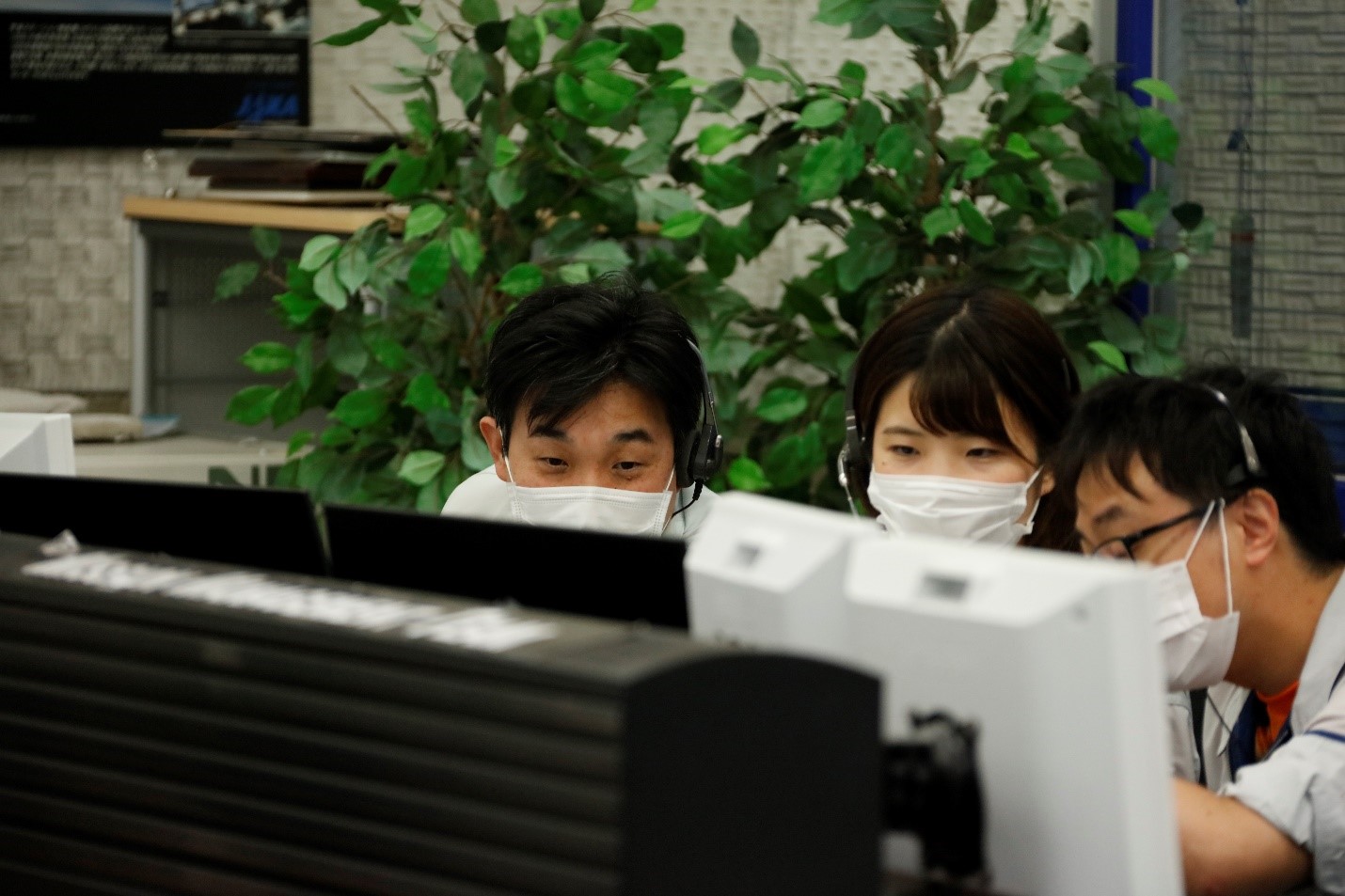
Photo: Flight controllers conducting the JAXA Wireless LAN Demonstration. Operations were conducted during the COVID-19 outbreak. Source: JAXA
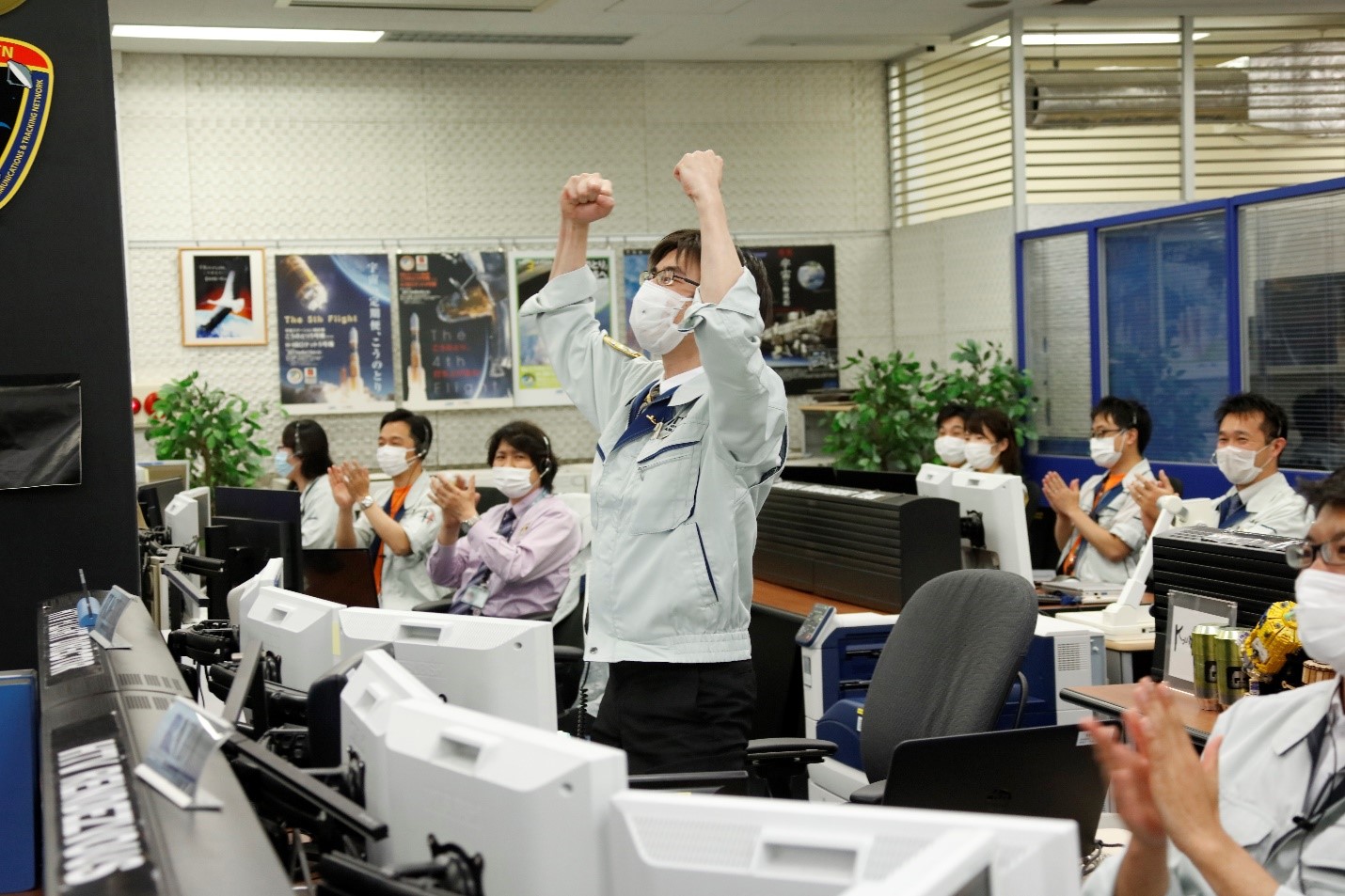
Photo: The JAXA HTV-9 Lead Flight Controller confirms HTV-9 capture. Source: JAXA
More Wi-Fi to come
The video demonstration was a precursor to the HTV-X2 mission, which will use the capability to stream docking camera video during an autonomous docking demonstration. Video will be critical to the demonstration, and the demonstration will be aborted if the video stream cannot be established. JAXA is constructing HTV-X2 with both a traditional berthing interface and an opposing new docking interface. The HTV-X2 will rotate to the docking interface after it is un-berthed by the arm, and then autonomously dock. JAXA intends to use autonomous docking at the lunar Gateway as well as the International Space Station.
Wi-Fi coverage outside the space station began on May 30, 2016 with the limited purpose of returning science data from a few stationary payloads. JAXA approached NASA to discuss alternatives for HTV-X2 video support in January 2017. NASA offered a 2 Mbps wireless link (“C2V2”) over Wi-Fi. JAXA added WLD to HTV-9 as a technology pilot in order to gain experience and uncover risks. The HTV-X2 autonomous docking demonstration is expected to approach the space station from a different direction than HTV-9 used. During these discussions, NASA proposed to add two more access points to improve coverage of the docking corridor. This concept used access points that were integrated with a camera. NASA’s commercial crew successors of the Space Shuttle needed cameras providing video in the docking corridor to support un-crewed flight tests, and so NASA accelerated the schedule and the access points were installed in June 2018 by astronauts Ricky Arnold and Drew Feustel.
During the past thirteen months, nineteen vehicles have visited the space station to make crew exchanges and to carry payloads and supplies. These vehicles have also included the Japanese HTV-8, ten Russian Soyuz and Progress spacecraft, six commercial cargo vehicles operated by SpaceX (Dragon) and Northrup Grumman (Cygnus), and the SpaceX Crew Dragon which carried Bob Behnken and Doug Hurley to the station on a commercially operated vehicle for the first time. Over the years the space station has also been visited by the European Space Agency spacecraft Automated Transfer Vehicle (ATV) and by NASA’s Space Shuttle. The International Space Station has always used allocated spectrum and an assortment of dedicated radio links to communicate with visiting vehicles. Among these available alternatives, JAXA and NASA selected Wi-Fi wireless networking for the first time because the internet protocol (IP) interface simplified integration, the data rates were well suited for video, and compatible hardware was easy for JAXA to find.
Choosing Wi-Fi allowed JAXA to supply an independent infrastructure using a separate channel, while also having the NASA infrastructure available. Space agencies are now routinely leveraging Wi-Fi technology and commercial products for operations that are not critical to life, property, or mission. Using legally unprotected “unlicensed” spectrum requires careful evaluation of the operations, and acceptance of the associated risks.
Trade names and trademarks are used in this report for identification only. Their usage does not constitute an official endorsement, either expressed or implied, by the National Aeronautics and Space Administration.
The statements and opinions by each Wi-Fi Alliance member and those providing comments are theirs alone, and do not reflect the opinions or views of Wi-Fi Alliance or any other member. Wi-Fi Alliance is not responsible for the accuracy of any of the information provided by any member in posting to or commenting on this blog. Concerns should be directed to info@wi-fi.org.



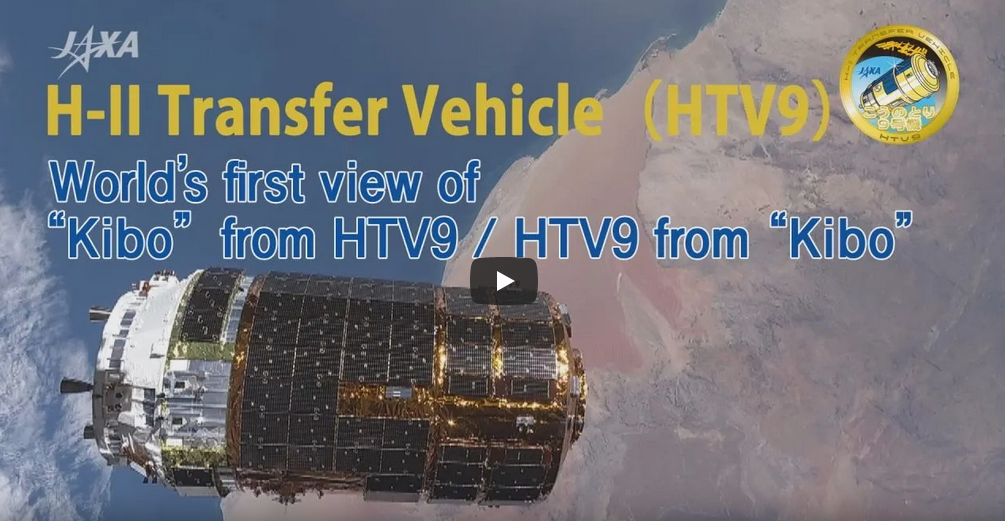

Add new comment